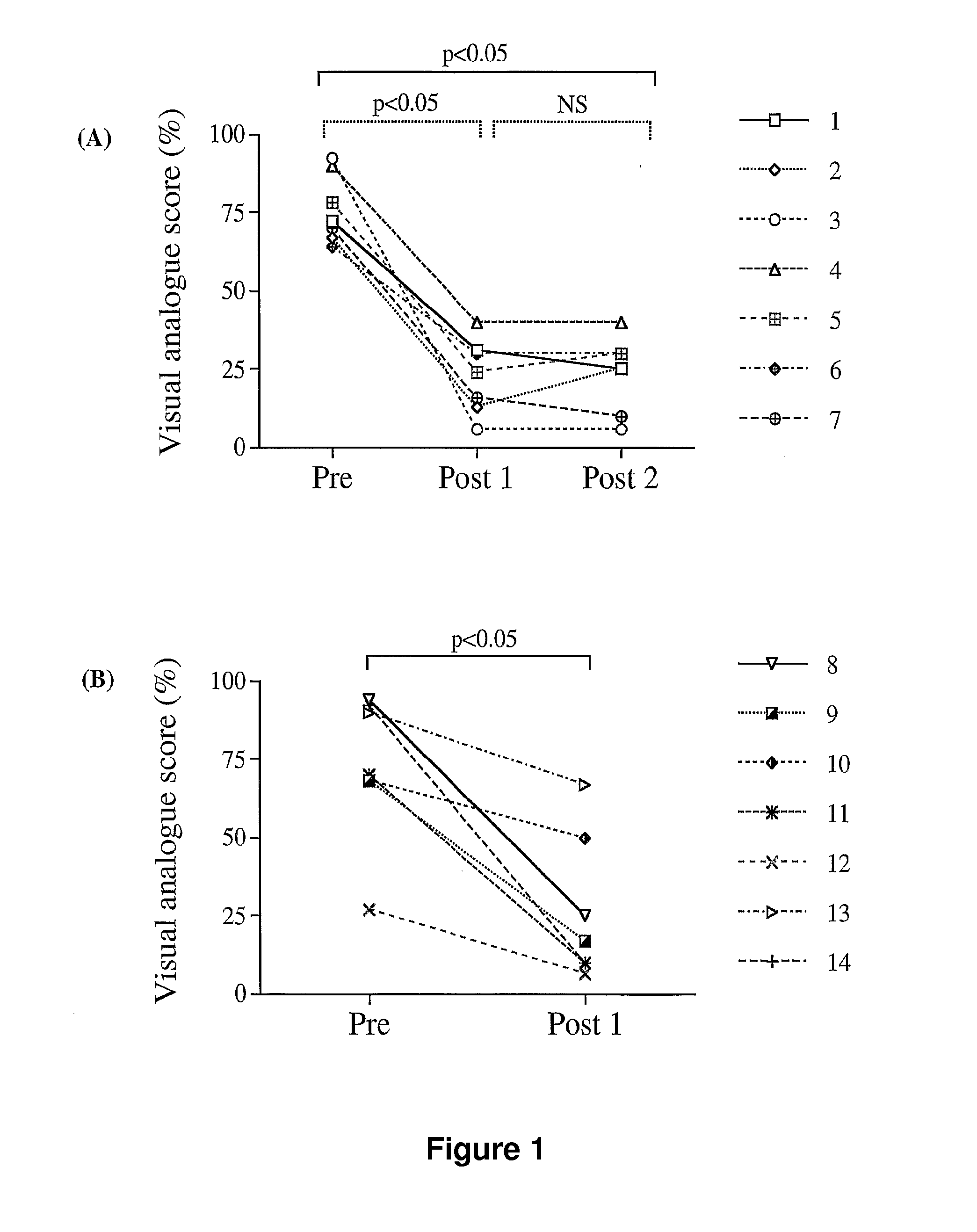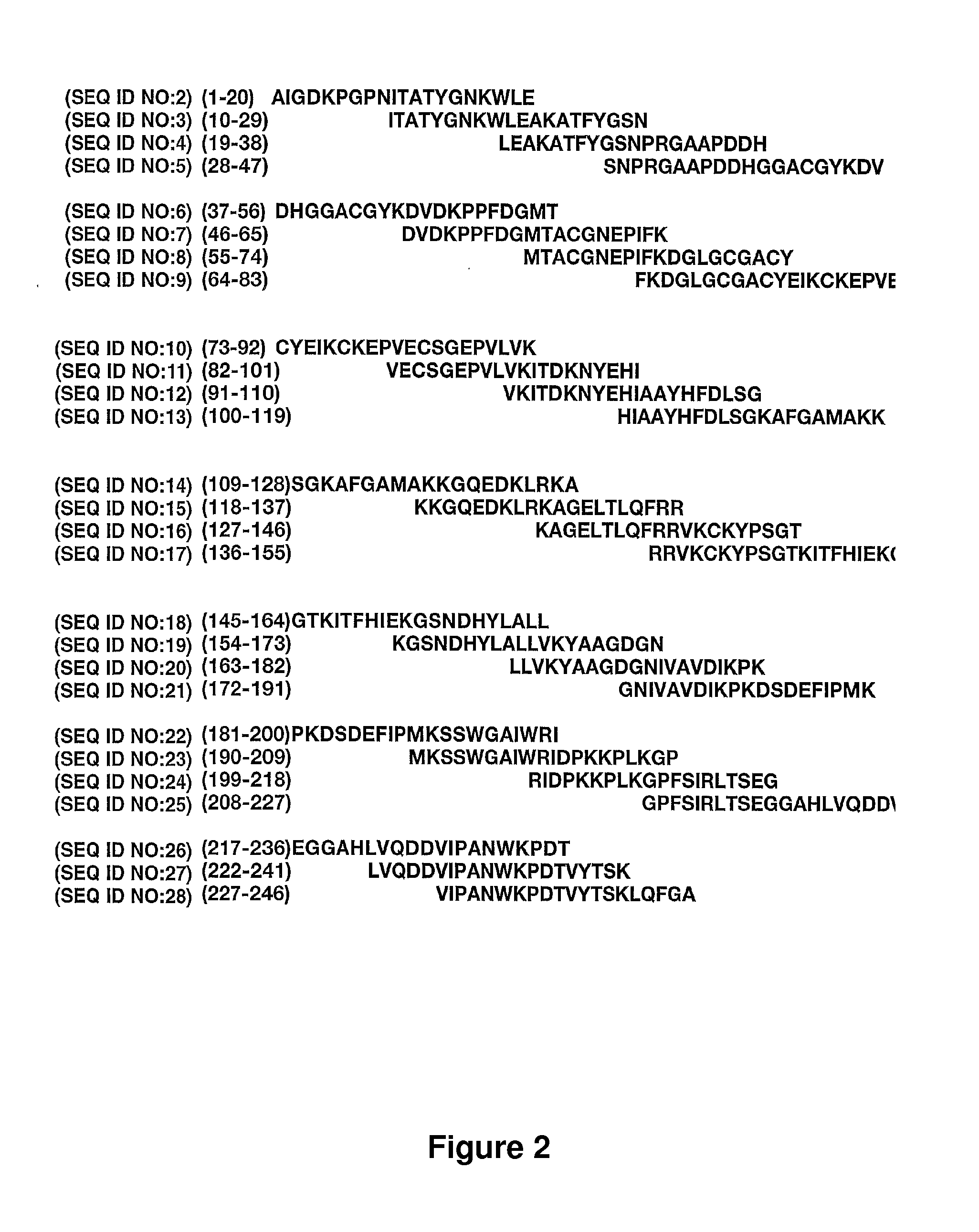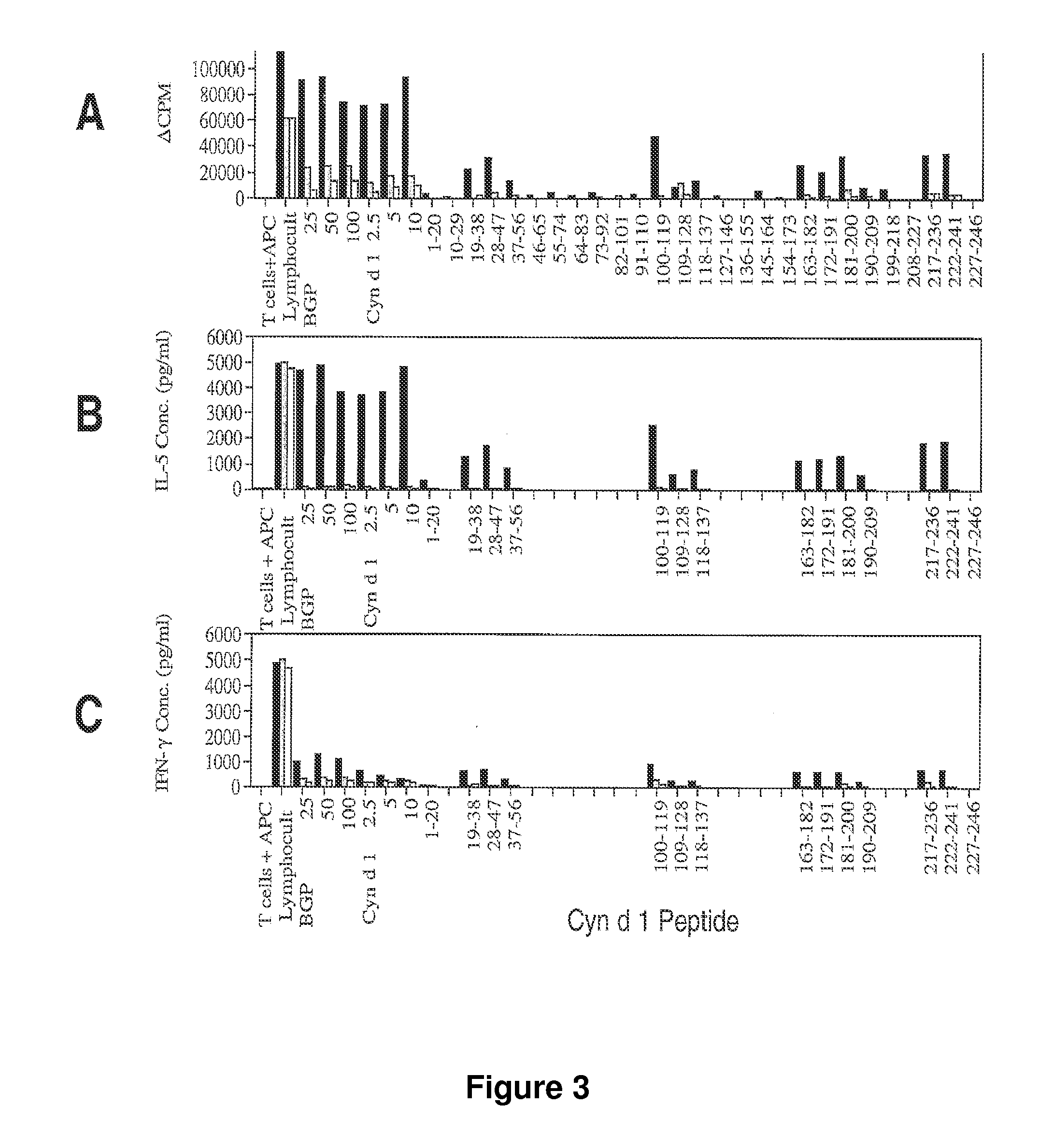T cell epitopes of the cyn d 1 allergen from bermuda grass pollen
a technology of cyn d 1 and bermuda grass, which is applied in the field of t cell epitopes of the cyn d 1 allergen from bermuda grass pollen, can solve the problems of asthmatic patients being used a lo
- Summary
- Abstract
- Description
- Claims
- Application Information
AI Technical Summary
Benefits of technology
Problems solved by technology
Method used
Image
Examples
example 1
Oligoclonal Analysis of the Atopic T Cell Response to the Group 1 Allergen of Cynodon Dactylon Materials and Methods
[0136]Patients and Immunotherapy Protocol
[0137]Fourteen patients (8F and 6M of mean age 33.4 years) from the Asthma and Allergy Clinic, Alfred Hospital, Melbourne, Australia were studied (Table 3). All patients suffered from severe seasonal rhinitis and / or asthma with symptoms extending into late summer corresponding to the peak of the BPG season. Bermuda grass pollen-specific IgE was present in all subjects as determined by positive skin prick tests to Bermuda grass pollen extract (wheal diameters ≧5 mm) as well as positive enzyme allergosorbent test (EAST, Kallestad Allercoat Sanofi-Pasteur Diagnostics; Table 3).
[0138]Patients were administered subcutaneous allergen immunotherapy with two-weekly injections of an alum precipitated depot preparation containing 50% Bermuda grass pollen+50% 7-grass mix (AllpyralR specifically prepared and generously provided by Bayer Au...
example 2
Clinical Efficacy of Immunotherapy
[0157]All fourteen patients demonstrated a marked improvement in their symptoms as assessed by the visual analogue scores reported by the patients during the pollen season (FIG. 1). This was accompanied by decreased medication usage in all patients. Despite the clinical efficacy, as anticipated from published studies (Lichtenstein, L. M., Ishizaka, K., Norman, P. S., Sobotka, A. K., Hill, B. M., J. Clin. Invest., 52:472-482m 1973; Gleich, G. J., Zimmerman, E. M., Henderson L. L. and Yunginger, J. W., J. Allergy Clin. Immunol., 70:261-271, 1982; Creticos, P. S., Van Metre T. E., Mardiney, M. R., J. Allergy Clin. Immunol., 73:94-104, 1984; Djurup, R., Malling, H., Sondergaard, I., Weeke, B., J. Allergy. Clin. Immunol., 76:46-55, 1985), the Bermuda grass pollen-specific IgE measurements showed no consistent changes during the time of study (Table 2). Daily seasonal pollen counts were comparable over the three seasons.
example 3
Oligoclonal T Cell Respnses to Bermuda Grass Pollen Allergens
[0158]The 2-week Bermuda grass pollen-specific T cell lines from all 14 Bermuda grass pollen allergic patients showed strong proliferative T cell responses to the crude Bermuda grass pollen extract pre-immunotherapy with 13 / 14 patients also responding to Cyn d 1. A representative proliferation assay expressed as Acpm for one patient is shown in detail in FIG. 3A. Following SIT, thee was a marked decrease in proliferative responses to Bermuda grass pollen and Cyn d 1. Proliferation to Bermuda grass pollen following one year of SIT was decreased in 12 / 14 patients (FIG. 4A, B). Patient 5 showed a light decrease in proliferation after one year of SIT but interestingly T cell reactivity to Bermuda grass pollen was increased after two years. Patient 11 showed a similar increase in T cell recognition of Bermuda grass pollen at one year. A decrease in proliferation to Cyn d 1 was observed in 11 / 13 Cyn d 1-reactive patients followi...
PUM
| Property | Measurement | Unit |
|---|---|---|
| Magnetic field | aaaaa | aaaaa |
| Volume | aaaaa | aaaaa |
| Volume | aaaaa | aaaaa |
Abstract
Description
Claims
Application Information
 Login to View More
Login to View More - R&D
- Intellectual Property
- Life Sciences
- Materials
- Tech Scout
- Unparalleled Data Quality
- Higher Quality Content
- 60% Fewer Hallucinations
Browse by: Latest US Patents, China's latest patents, Technical Efficacy Thesaurus, Application Domain, Technology Topic, Popular Technical Reports.
© 2025 PatSnap. All rights reserved.Legal|Privacy policy|Modern Slavery Act Transparency Statement|Sitemap|About US| Contact US: help@patsnap.com



